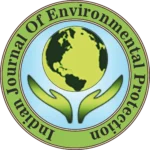IJEP 44(7): 622-629 : Vol. 44 Issue. 7 (July 2024)
A.N. Swaminathen1, C. Vivek Kumar2, K. Vamsi Krishna3, S. Robert Ravi4 and Ajith Kumar Dey5
1. Adi Shankara Institute of Engineering and Technology, Kalady – 683 574, Kerala, India
2. Gokaraju Rangaraju Institute of Engineering and Technology, Hyderabad – 500 090, Telengana, India
3. Malla Reddy Engineering College, Hyderabad – 500 100, Telengana, India
4. Girijananda Chowdhury University, Guwahati – 781 017, Assam, India
5. Sree Dattha Institute of Engineering and Science, Hyderabad – 501 510, Telangana, India
Abstract
The most well-known pozzolanas are rice husk ash (RHA) and metakaolin (MK), which are commonly used in concrete construction. The addition of pozzolana to concrete improves its long-term durability. Following multiple research findings from various countries, concrete’s growth is focused on improving its performance, resulting in the improvement of high-strength concrete. This high-strength concrete has a variety of improved properties, including increased durability by providing resistance to chemically varying environments, improved economic status, CO2 reduction by reducing amount of cement (cement has been partially replaced by mineral admixtures- MK and RHA), increased ecology balance by balancing natural resource consumption and more. The objective of this research is to investigate the impact of mineral admixtures on the durability of high-strength concrete. The key to achieving effective results, such as low porosity and low permeability, has always been proper material proportioning. The concrete utilized in this project is of M60 grade. Curing for 3, 7, 14, 28, 56 and 90 days is preferred, with three sample blocks (different combinations) each. After several experiments, where durability is carefully assessed, these different concrete compositions are preferred. Research has shown that carefully proportioning mineral admixtures to concrete can improve durability performance even further. For example investigations on saturated absorption of water, porosity and acid resistance, salt water resistance, alkalinity, permeability, resistance to abrasion, impact strength and rapid chloride penetration. Blending cement with supplementary cementing materials (SCM) has consistently resulted in numerous advantages, including cost savings in concrete, increased early strength, waste item reuse, reduced water retention and reduced water penetration.
Keywords
Durability, Porosity, Permeability, Metaeolin, Rice husk ash
References
- Ramasamy, V. 2012. Compressive strength and durability properties of rice husk ash concrete. KSCE J. Civil Eng., 16: 93-102. DOI: 10.1007/s122 05-012-0779-2.
- Neville, A. and P.C. Aïtcin. 1998. High performance concrete- An overview. Mater. Struct., 31: 111-117. DOI: 10.1007/BF02486473.
- ACI 211.4R.93. 2001. Guide for selecting properties for high strength concrete with Portland cement and fly ash. ACI manual of concrete practice, ACI Committee report.
- ACI 363.R-92. 1995. State of the art: Report for high strength concrete. ACI Committee report.
- Kartini, K. 2011. Rice husk ash- Pozzolanic material for sustainability. Int. J. Appl. Sci. Tech., 1(6): 169-178.
- IS 12269. 2013. Ordinary Portland cement, 53 grade- Specification (1st rev). Bureau of Indian Standards, New Delhi.
- IS 4031-3. 1988. Methods of physical tests for hydraulic cement. Part 3: Determination of soundness. Bureau of Indian Standards, New Delhi.
- IS 4032. 1985. Method of chemical analysis of hydraulic cement. Bureau of Indian Standards, New Delhi.
- IS 2386-3. 1963. Methods of test for aggregates for concrete. Part 3: Specific gravity, density, voids, absorption and bulking. Bureau of Indian Standards, New Delhi.
- IS 383. 1970. Specification for coarse and fine aggregates from natural sources for concrete. Bureau of Indian Standards, New Delhi.
- Perumal, K. and R. Sundararajan. 2004. Effect of partial replacement of cement with silica fume on the strength and durability characteristics of high performance concrete. 29th Conference on Our world in concrete and structures. Proceedings, pp 397-404.
- IS 516. 1959. Methods of test for strength of concrete. Bureau of Indian standard, New Delhi.
- IS 5816. 1999. Method of test splitting tensile strength of concrete. Bureau of Indian standard, New Delhi.
- IS 3085. 1965. Method of test for permeability of cement mortar and concrete. Bureau of Indian standard, New Delhi.
- Duval, R. and E.H. Kadir. 1998. Influence of silica fume on the workability and compressive strength of high performance concrete. Cement Concrete Res., 28(4): 533-547.
- Kartini, K., H.B. Mahmud and M.S. Hamidah. 2010. Absorption and permeability performance of selangor rice husk ash blended grade 30 concrete. J. Eng. Sci. Tech., 5(1): 1-16.
- Malathy, R. and K. Subramanian. 2003. Role of mineral admixtures on the corrosion behaviour of reinforcement in high performance concrete. National Seminar on Futuristic in concrete and construction engineering, Chennai. Proceedings, 2: 5.17-5.24.
- IS 456. 2000. Plain and reinforced concrete- Code of practice. Bureau of Indian standard, New Delhi.
